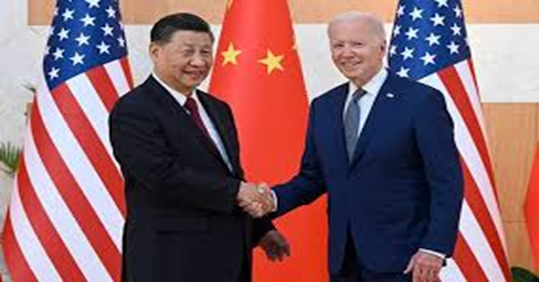THE TAIWAN ORDEAL AND THE THREAT OF THE DRAGON
Posted on : April 20, 2023Author : RAUNAK BHATTACHARJEE

Operation Joint Sword officially comes to an end, as of 10th April, 2023. It was a 2-day exercise regime conducted by the Chinese PLA’s Eastern Theatre Command that keeps an eye on the Taiwan Strait, and also plays a pivotal role in the South China Sea region; this show of strength is meant to be a part of the Chinese Carrot and Sticks Strategy, that it employs in handling the immediate neighbourhood. These latest series of exercises and naval as well as aerial build-up around Taiwan, encroaching upon its airspace and territorial waters, undermining its sovereignty, constitute a knee-jerk response to the Taiwanese President Tsai Ing-Wen meeting up with US House of Representatives Speaker, Kevin McCarthy. This is reminiscent of the Chinese action following the then House of Representatives’ Speaker, Nancy Pelosi’s visit to Taiwan in 2022.

The ‘One China Policy’ is not exactly an unbeknownst Chinese policy stance, however, what it seriously clashes with, is the United States’ ‘Strategic Ambiguity’. The Nixon-Kissinger opening to China strongly augmented China’s image in the international arena. Michael Pillsbury, the noted diplomat and China watcher, in his work, ‘The Hundred-Year Marathon China’s Secret Strategy to Replace America as the Global Superpower’ clearly states how Nixon and successive regimes of Carter, Reagan and Clinton have pandered to the ‘One China Policy’, however, maintaining ties with Taiwan, arming it and augmenting its position. The pro-Taiwan stances, in this regard, have been taken the US Congress, with the Office of the President of the United States maintaining a principled silence on Taiwan, until extenuating circumstances erupt.
The present exercise, Joint Sword, involved massive PLAN (People’s Liberation Army Navy) and PLAAF (People’s Liberation Army Air Force) forays into Taiwanese territorial waters and airspace, with the most advanced weaponry at hand, making a full display of strength. On the diplomatic front, the ‘Wolf Warrior’ diplomats of China, part of ‘China’s Civilian Army’, as Peter Martin addresses them, discredited both US and Taiwan for maintaining communications. On the other hand, the failure of the West in handling the Russo-Ukrainian crisis is also something they harked back to, as part of the exhibition of Chinese Smart Power.

The term ‘Smart Power’ is in fact, very ambiguous in nature, and is contested. Wilson III (2008) defines it as the ‘capacity of an actor to combine elements of hard power and soft power in ways that are mutually reinforcing such that the actor’s purposes are advanced effectively and efficiently’. To put it in other words, the teleological facet of smart power involves the proficient usage of resources albeit in an economical manner, focussing on an efficacious outcome. The particular areas of importance include: the ‘target’, the specific point spatially or demographically, wherein the power needs to be exercised; ‘self-knowledge’ pertaining to the setting up of goals and also, having epistemological and ontological understanding of the self; ‘broader regional and global context’ pertaining to the location and contextuality of the action; ‘tools’ vis-à-vis the application of resources aimed at teleological execution. This was something that he referred to, vis-à-vis, US Foreign Policy, but China is a very strong adherent of this particular dictum.
Pillsbury has talked in length about China’s Marathon Strategy in his magnum opus, that involves a multi-pronged process of deception, inconspicuous surveillance, a certain discretion when it involves manoeuvrability, and hedging bets on the certain recklessness of the hegemon. However, China has, at this juncture, shown its deep understanding of Kautilya’s Shadgunya theory that involves the six principal tenets of Foreign Policy: sandhi (peace); vigraha (war); asana (neutrality/ to wait and observe, before acting); yana (involving coercive diplomacy and mobilization for war); samshraya (forming alliances); dvaidhibhava (diplomatic duplicity/ ‘dual policy’). Adhering to yana exhibits Chinese carrot and sticks policy, and to the Warring States philosophy that the ying pai (hawks) executive tend to prefer, goes on to show that President Xi Jinping is not mincing his words or vacillating his position. In fact, he is not even counting the cauldrons. He is biding his time, provoking to a certain extent, but overall, he is playing a Long Game of wei qi.
Raunak Bhattacharjee is an Adjunct Researcher at Asia in Global Affairs, Kolkata, India.He is an Honours Graduate in Political Science from Presidency University, Kolkata, West Bengal, India. His interests lay in International Relations, Area Studies and Maritime Naval Security Studies with particular emphasis upon the Indian Ocean Region, and he is a neo-realist.




